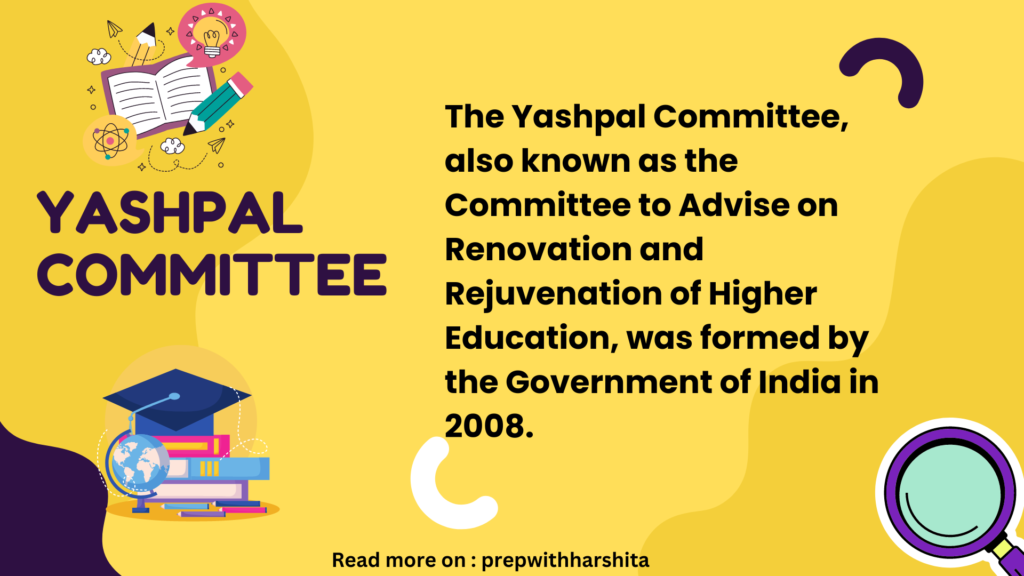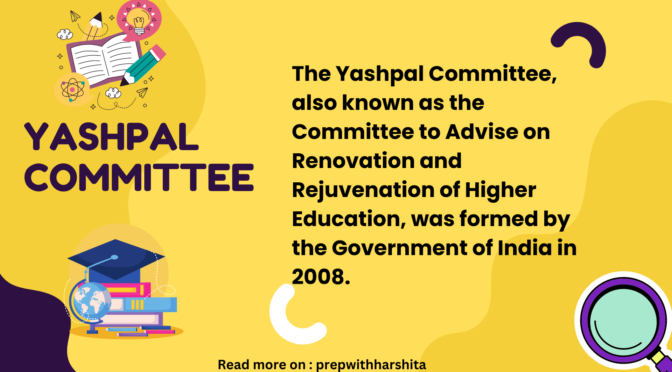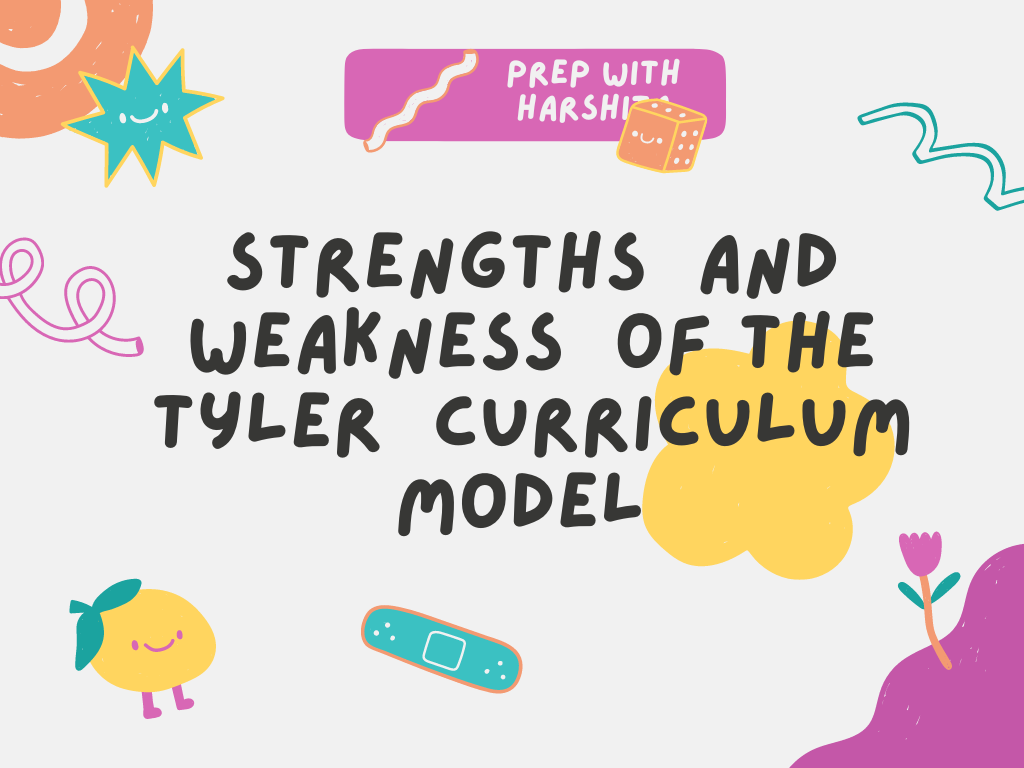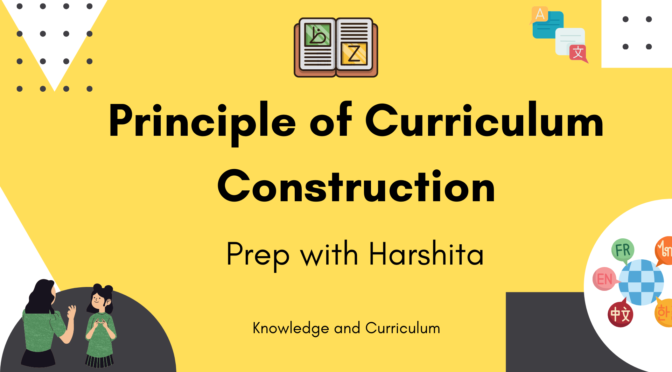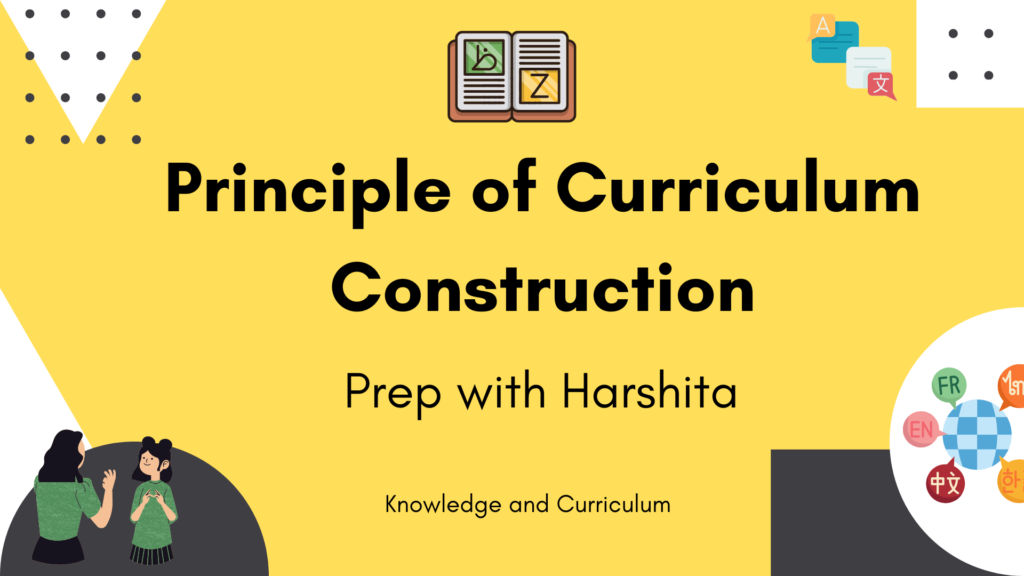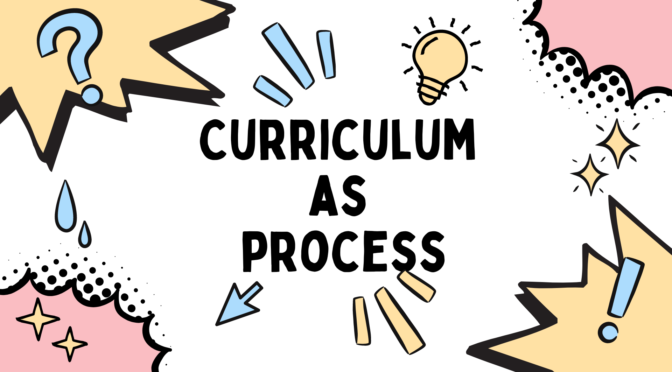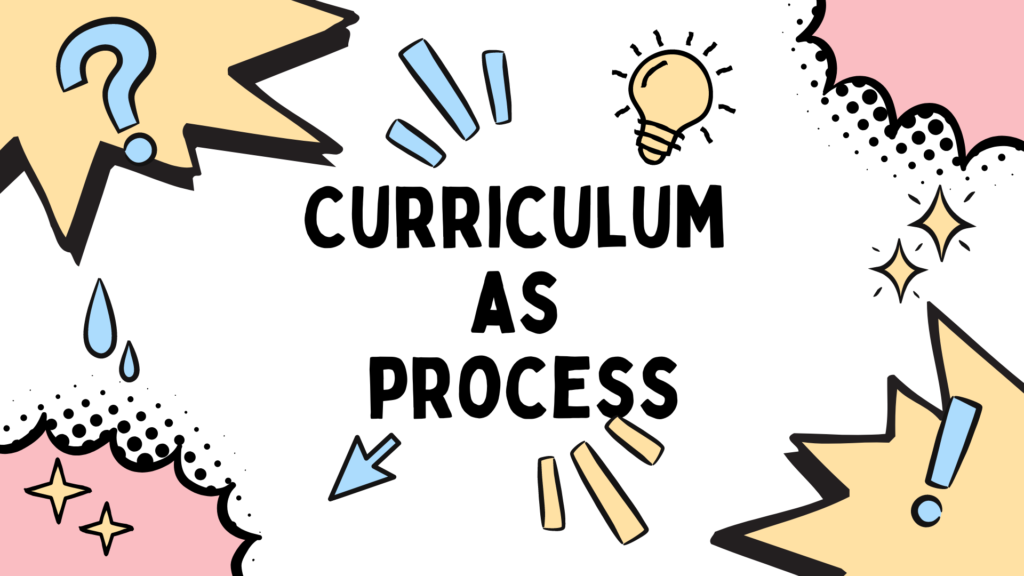The Yashpal Committee, also known as the Committee to Advise on Renovation and Rejuvenation of Higher Education, was formed by the Government of India in 2008.
The committee was formed under the chairmanship of Professor Yash Pal, a renowned physicist, and educator, with the objective of recommending reforms for higher education in India.
The committee consisted of several other distinguished academicians and experts in the field of education, who contributed to the final report submitted in 2009.
Also read: Kothari Commission
Key features in the Yashpal Committee report:
Some of the key features of the Committee’s report include:
- Overhaul of undergraduate education: The Committee recommended a major overhaul of the undergraduate education system to make it more flexible and interdisciplinary. It suggested the adoption of a credit-based system that would allow students to choose courses from different disciplines and create their own customized degree programs.
- Emphasis on research and innovation: The Committee focused on the need to encourage research and innovation in universities by providing greater funding and autonomy. It also recommended the creation of research clusters and networks to promote collaboration among institutions and researchers.
- Quality of teaching: The Committee recommended improving the quality of teaching by providing better training and support for faculty members. It also suggested the creation of a national teaching excellence framework to recognize and reward good teaching.
- Access to higher education: The Committee emphasized the need to increase access to higher education for marginalized communities and disadvantaged groups. It recommended the expansion of scholarships and financial assistance programs to make education more affordable.
- Governance and management: The Committee recommended strengthening the governance and management of universities to promote transparency and accountability. It suggested the creation of an independent regulatory body to oversee higher education in the country.
Overall, the Yashpal Committee’s report aimed to create a more inclusive, flexible, and innovative higher education system in India that would enable the country to meet the challenges of the 21st century.
